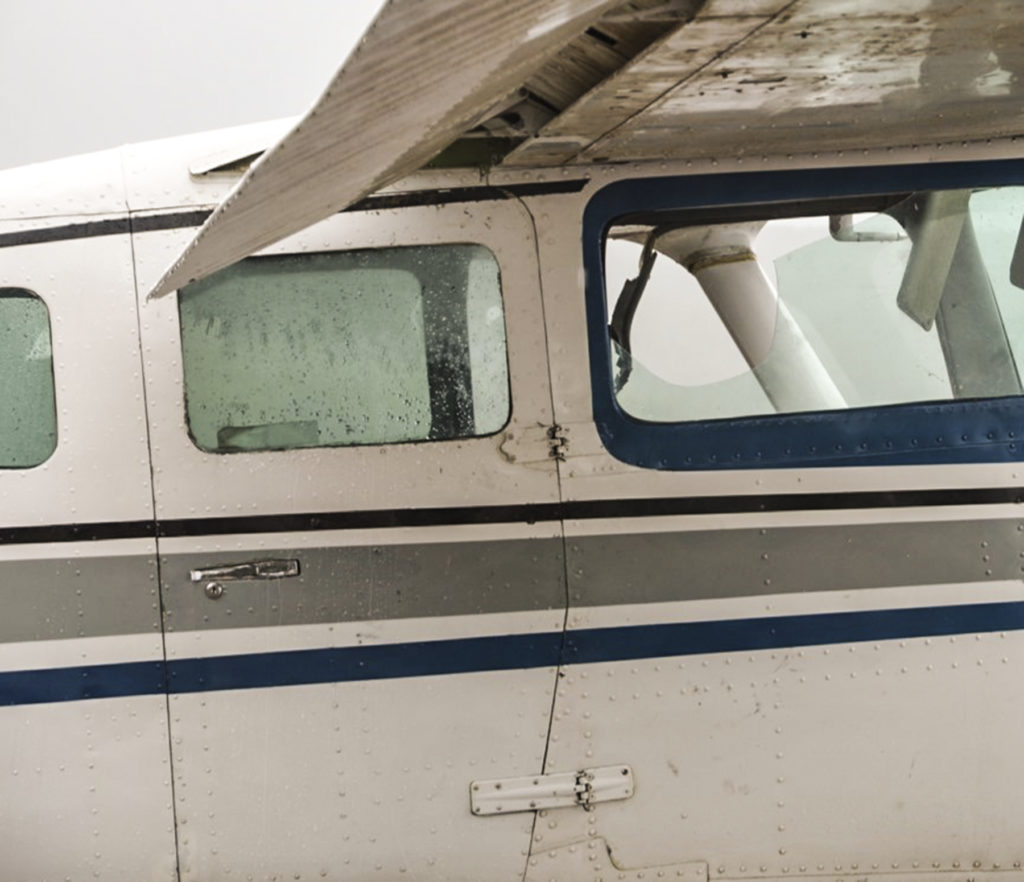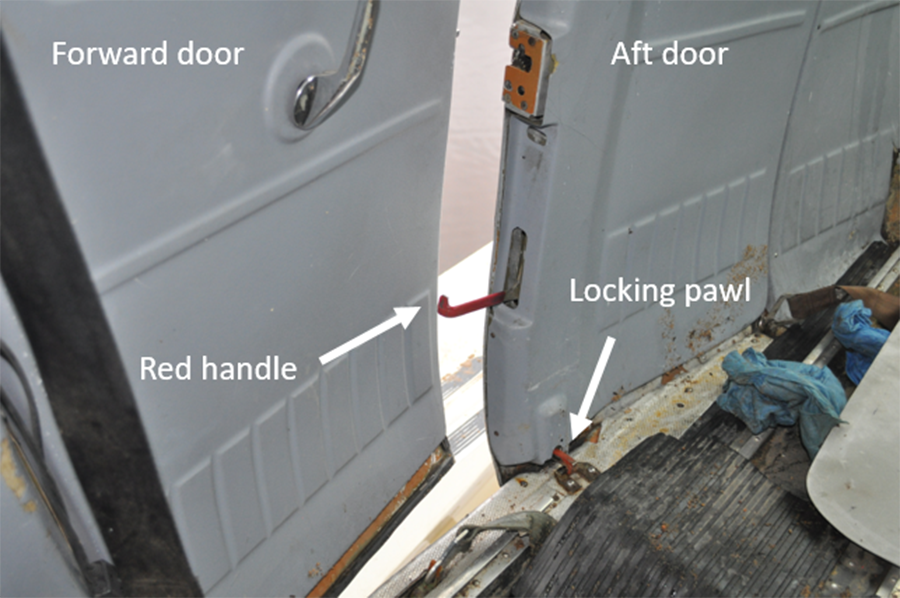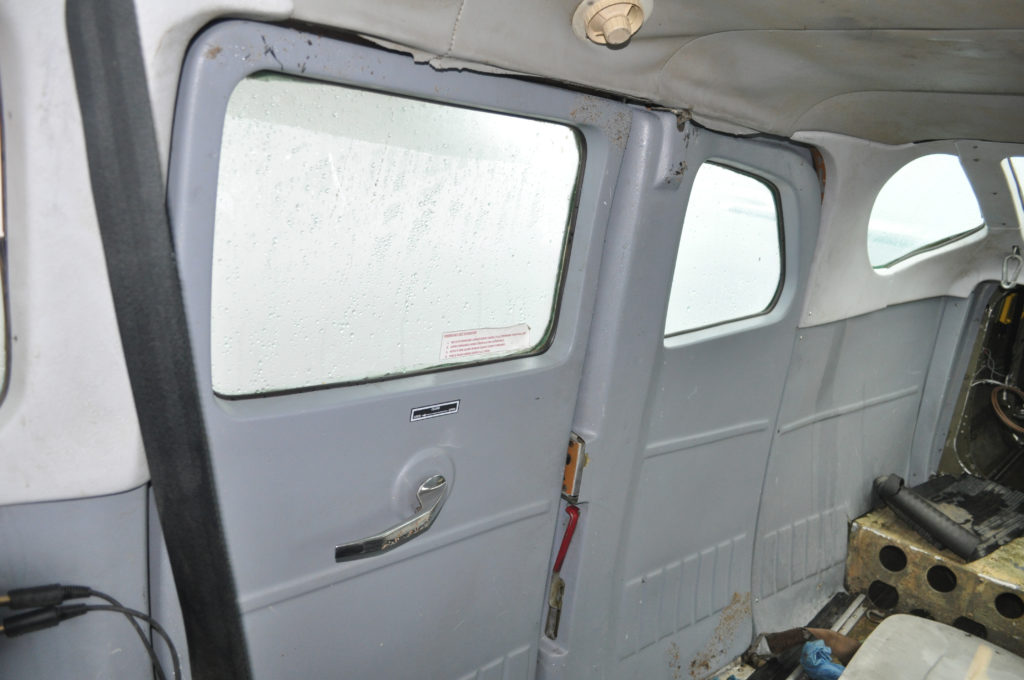Estimated reading time 10 minutes, 58 seconds.
Two Canadian companies have pioneered a solution to an ongoing safety issue that involves emergency egress from the rear seats of Cessna 206 family aircraft.

Tackling a design problem that has stumped others for decades, Dale Floyd of Coast Dog Aviation and Ron Strobl of Airworthiness Resources Corporation have combined their expertise to engineer a kit-based solution that does not involve structural modifications to the aircraft. Most importantly, it has the potential to save lives.
Back in the summer of 2018, a float-equipped Cessna 206G Stationair carrying one pilot and four passengers was landing on a northern lake when control was lost and the aircraft overturned upon hitting the water.
The pilot and one passenger managed to escape the submerged fuselage, but upon diving the pilot was unable to open the rear cargo doors, which were locked from the inside and blocked by the extended flaps. The other three passengers drowned.
Initial Transportation Safety Board of Canada (TSB) investigations (Advisory A18W0129-D1-A1) revealed that the crash impact was survivable by all on board. The locked rear cargo doors were undamaged and all required door placards were in place.
In order to open both cargo doors in a Cessna 206, the front one must be opened first. The rear door can then be unlocked by pulling down a red handle in the front edge of the door and releasing a catch on the floor. However, with the flaps being in a partial land configuration (20 degrees of their possible 40 degrees of travel), the front cargo door is inhibited from opening more than eight centimetres by the flap itself, which in turn prevents the operation of the rear door handle.
This is not a new issue with the 206, Cessna’s very popular single-engine, six-passenger aircraft. First introduced in 1964, approximately 9,000 models have been built. There have been numerous configurations until the final H model version was introduced in 1998, following a dormant period between 1986 and 1996. The H model is still in production.
Designed to carry six people (including the pilot) or as a cargo hauler, the 206 is a very useful utility aircraft with a range of up to 703 nautical miles. It is an ideal floatplane with a large cargo door opening, a flat floor, spacious freight area and the flexibility to fly mixed configurations of seats and cargo.
The TSB said that prior to the 2018 accident, according to data collected since 1989, there have been five Cessna 206 accidents in the United States and Canada in which extended flaps blocked the rear double door. Those earlier accidents resulted in eight fatalities.
In 1991, Cessna produced Service Bulletin (SB) SEB91-4 to simplify the opening of the rear cargo door past the impeded forward door. In 1991, Transport Canada (TC) issued a Service Difficulty Alert (AL-97-04) which is a non-mandatory recommendation to install the FAA SB. The SB improves the operation of the rear door but does not address the issue of the forward door being impeded by the flaps.
By 1998, when the first 206H model was imported to Canada, TC policy had changed and the regulator no longer accepted the FAA’s type certificates. The H model was subject to the TC certification process, where it was determined the rear doors could not be certified as an emergency exit as they were not easily accessible and the opening process was not simple nor obvious.

To solve the issue, TC certified (Type Cert A-212-10) the Cessna 206H as a five-passenger aircraft with one of the second row of seats being removed to ensure easy egress towards the front doors by the two passengers in the furthest aft seats. Not only did this reduce the payload by one passenger (17 per cent) but added an unintended consequence with the C of G limitations. With two passengers in the rear seat row and only one in the next row, the aircraft C of G was too far aft so only four could be carried. That reduced the useful payload to only four with a loss of 33 per cent of payload. And still the door issue was unresolved.
Between 1999 and 2003, the FAA and TC struggled to arrive at a solution that would mitigate the door issue and achieve a design change that could be applied to the large fleet of Cessna 206 aircraft. No acceptable solution was found. The H model stayed at five seats and the older models at six. In 2005, TC tried to restrict all older 206 floatplanes to five seats but that was finally put on hold; in 2008, it was abandoned as no other options had been found.
After the most recent 2018 crash, TC is once again examining the issue and may limit the seating in all 206s. The current Canadian fleet of Cessna 206 aircraft consists of 190 U206, 50 TU206, and 11 206H models. Worldwide, possibly more than 8,000 are still flying.
Great minds think alike
It turns out that two Canadian companies were working on an identical, viable solution at the very same time.
Dale Floyd, president and owner of Coast Dog Aviation in Pitt Meadows, B.C., is both a pilot and an AME. He has been expanding his AMO capabilities since starting Coast Dog 10 years ago. The company provides a wide variety of maintenance and consulting services for aircraft up to the size of a Twin Otter for customers at its new Pitt Meadows facility and as far away as the Northwest Territories. Floyd is also a high-time floatplane pilot who has been aware of the C206 issue for years.
Ron Strobl is the managing director of Airworthiness Resources Corporation in Spruce Grove, Alta. He is an AME and a Transport Canada Minister’s Delegate (MD-M) authorized to perform certification duties. Typically, this delegation allows Strobl to issue Certificates of Airworthiness, Special Certificates of Airworthiness, and Export and Import Airworthiness Certificates. His company also designs, manufactures and certifies several aeronautical components.
“I was approached by North-Wright Air of Norman Wells, N.W.T., regarding the upcoming AD [airworthiness directive],” said Strobl. “[They asked me] to look at a better way to comply with the AD without losing valuable payload and solving the flap/door issue.” After trying several unsatisfactory methods involving the rear-door windows, he came up with a novel idea.

Meanwhile, over in Pitt Meadows, Floyd had been talking with one of his customers regarding the same issue and had come up with the same idea!
Aviation is a small world, particularly on the maintenance side. Floyd and Strobl had known each other for years and their paths had crossed many times. They soon realized they had reached the same solution. Strobl was several steps ahead of Floyd, having already involved TC, and he was well underway with the first prototype.
“I decided to drop my plans,” said Floyd. “Ron was well underway with the design and certification, so I was supporting that by adding my expertise in other ways.”
The joint project involves a modification to the forward cargo door to allow the top portion to fold if it contacts the flaps.
With their combined knowledge of mechanical design, Strobl’s manufacturing, design and certification expertise, and Floyd’s worldwide contacts and manufacturing capability, the project has rapidly progressed towards an Alternate Means of Compliance (AMOC) certification with TC.
“I have talked to TC’s headquarters and they are on board with what we have designed,” said Strobl. “We are in the process of developing the STC for Canadian aircraft and will then work with the Federal Aviation Administration in the U.S. and the European Union Aviation Safety Agency in Europe.”
The intent is to design a kit that can be installed on doors by either Coast Dog or Airworthiness Resources, or by the end-user if they have the capabilities.
“I put a small feeler out a few weeks ago on the Internet and I have had calls from all over North America and Norway,” said Floyd. “A customer of mine in Alaska wants them as soon as possible.”
Currently, Floyd has the necessary manpower in Pitt Meadows to install the first completed kit and would hire more staff as required. He has a door ready to be modified as soon as the pre-production kit arrives.
“The first components for the pre-production kits have been designed and are being laser-cut,” continued Strobl. “We already have a North-Wright door in our shop here to modify.
“The beauty of our design is that no work is required on the aircraft itself, even the door placards remain the same,” he concluded. “Not only do I enjoy being a problem solver, but this project has the bonus of saving lives.”
The first kits for all Cessna 206 models should be available by mid-May, just in time for float season.









hi i want to know if the stc is ready . I own a 206 on floats. C-GMSA.
Hi Guy, please contact either company mentioned in the article to find out the status of the STC. Thanks!